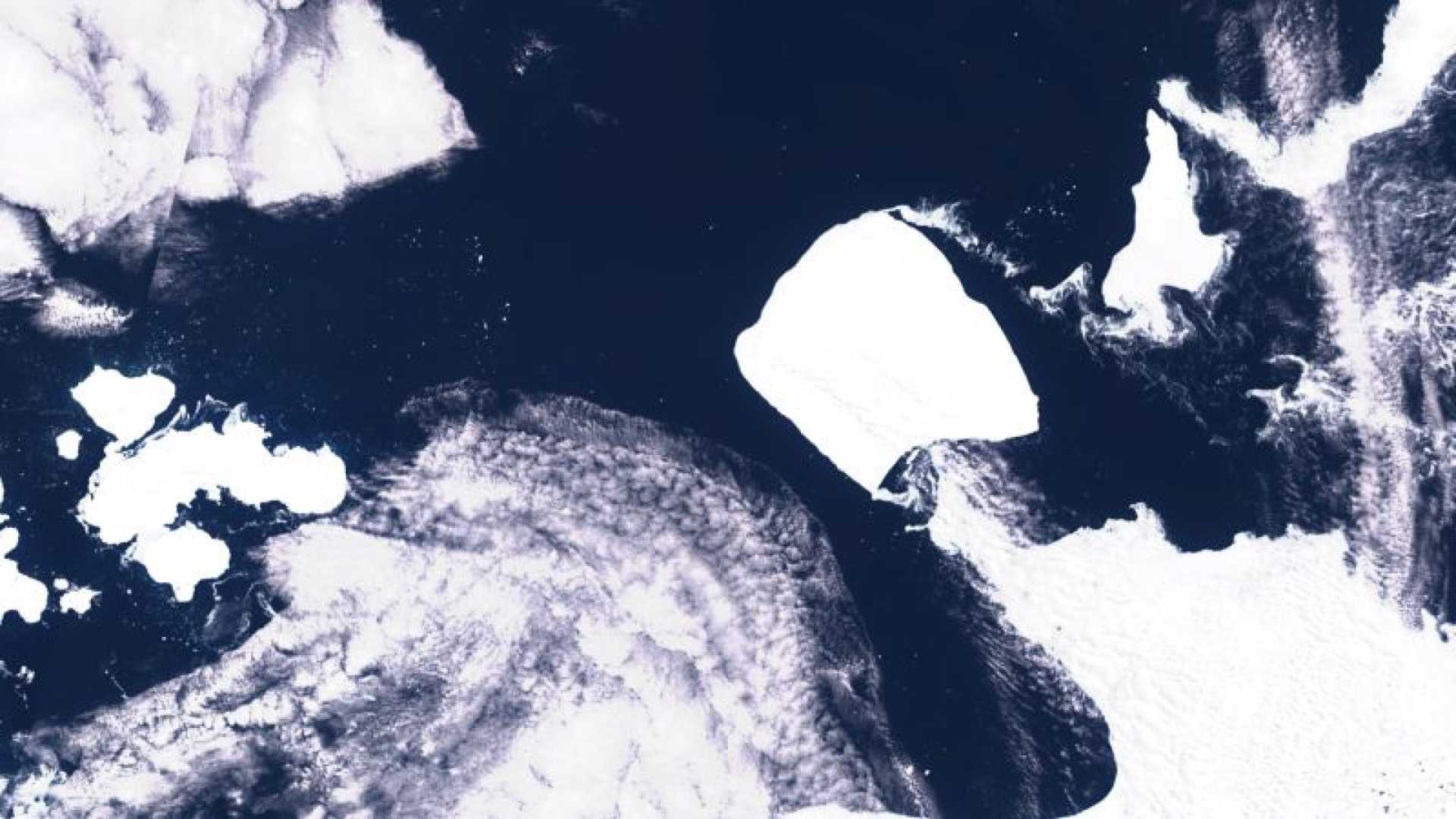World
World’s Largest Iceberg A23a Threatens South Georgia Wildlife

SOUTH GEORGIA ISLAND, Antarctica — The world’s largest iceberg, A23a, a trillion-ton behemoth twice the size of Greater London, is drifting toward South Georgia Island after breaking free from its decades-long grounding in the Southern Ocean. Scientists warn the colossal iceberg could disrupt the remote island’s fragile ecosystem, home to millions of penguins, seals, and other wildlife.
Currently located approximately 173 miles from South Georgia, A23a has been slowly melting as it moves northward through warmer waters. Satellite imagery shows the iceberg, which calved from Antarctica’s Filchner Ice Shelf in 1986, remains roughly the size of Cornwall. Researchers predict it will ground in the shallow waters around South Georgia, potentially breaking into smaller fragments and forming a “floating city of icebergs.”
Marine ecologist Mark Belchier told the BBC, “South Georgia sits in iceberg alley, so impacts are to be expected for both fisheries and wildlife. Both have a great capacity to adapt, but the scale of A23a is unprecedented.”
The iceberg’s journey has been marked by unusual scientific phenomena. For months, A23a was trapped in a Taylor Column, an oceanographic feature that kept it spinning in place. This delayed its northward drift, but warmer waters eventually weakened its structure, allowing it to break free.
South Georgia, a British territory, is a critical breeding ground for king penguins, elephant seals, and fur seals. If A23a blocks access to feeding grounds, it could mirror the 2004 incident when iceberg A38 disrupted food supplies, leading to increased mortality among penguin chicks and seal pups.
Andrew Meijers, a physical oceanographer with the British Antarctic Survey, described A23a as “a huge wall of ice that towers above the ship.” He noted that while the iceberg’s movement is slow, its potential impact on wildlife is significant. “Parents may have to swim farther to forage, burning more energy and bringing back less food for their young,” Meijers said.
Despite the dramatic imagery, scientists emphasize that such events are part of the natural cycle in the Southern Ocean. Ted Scambos, a University of Colorado ice scientist, said, “The ecosystem has evolved with these icebergs being a factor for hundreds of thousands of years.”
However, as climate change accelerates ice calving events, the frequency of such disruptions is expected to increase. A23a’s journey serves as a stark reminder of the interconnectedness of Earth’s systems and the far-reaching impacts of a warming planet.












